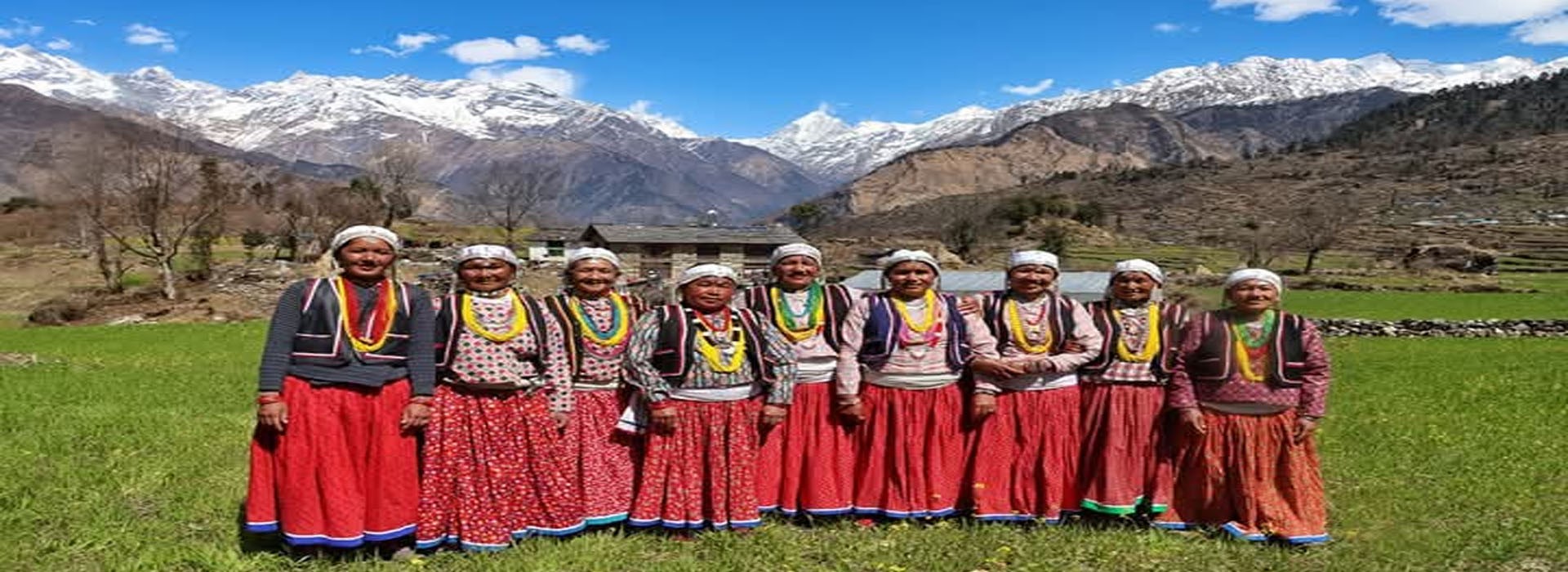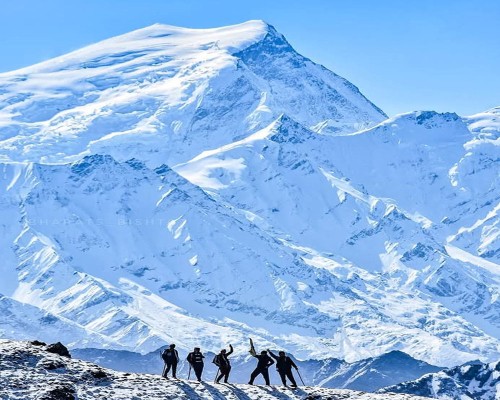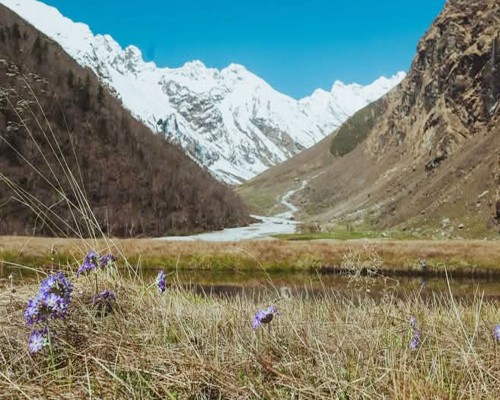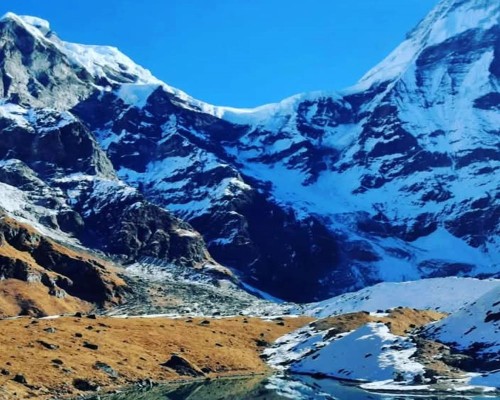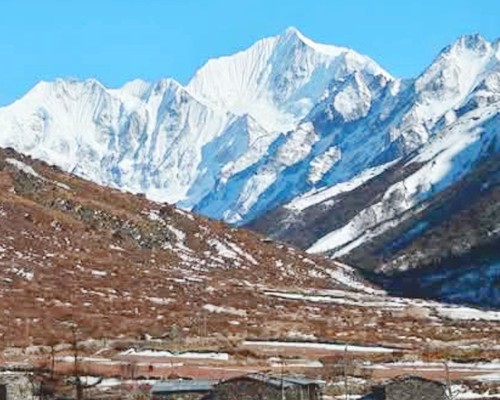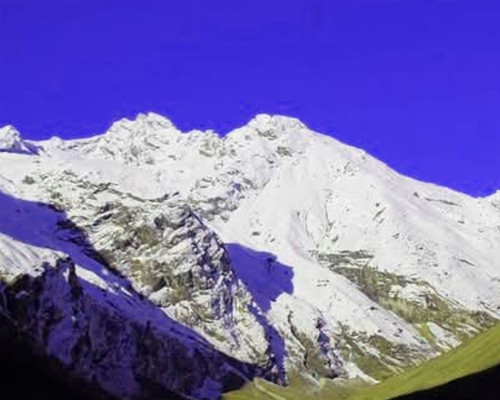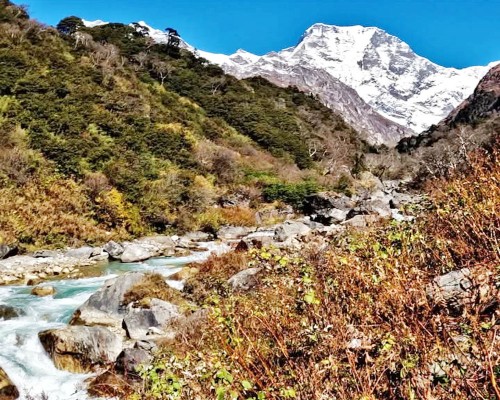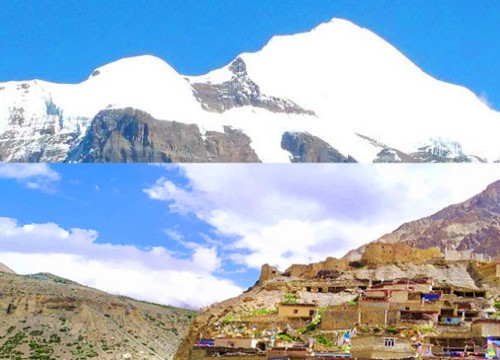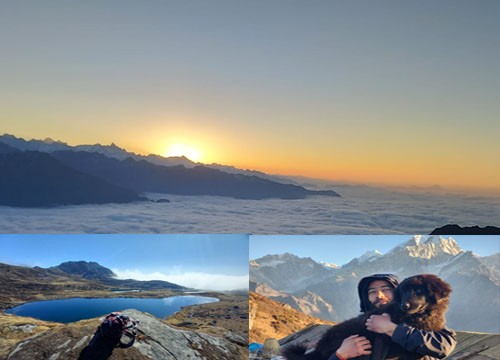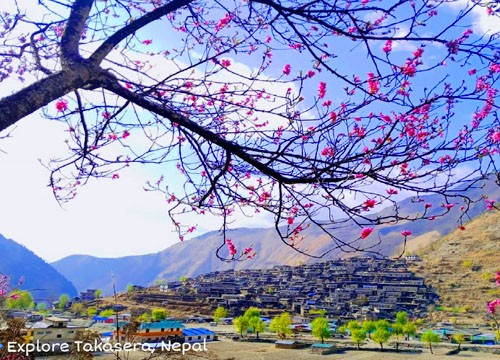How hard is Api Base Camp Trek?
The Api Base Camp journey is a moderately difficult journey recommended for hikers with adequate physical fitness and prior hiking experience. The track travels through remote and harsh terrain in Far Western Nepal, with frequent steep ascents, river crossings, and small roads. Daily hikes last 5 to 7 hours, and modest accommodations with few amenities adds to the difficulty. Although the height is moderate (up to ~4,000 meters), the seclusion, lack of infrastructure, and long journey to the starting location make it more challenging than popular treks. However, the raw beauty, cultural diversity, and seclusion make it incredibly gratifying.
Api Base Camp Trek Distance
The Api Base Camp Trek covers approximately 90 to 110 kilometers round trip, depending on the exact route taken. Starting from Latinath or Gokuleshwar in Darchula District, the trail winds through remote valleys, forests, and villages, eventually reaching the scenic base camp at around 4,000 meters above sea level.
Altitude Sickness
Altitude sickness, commonly known as Acute Mountain Sickness (AMS), can strike hikers at elevations exceeding 2,500 meters, especially those climbing to Api Base Camp (approx. 4,000 meters). Beginners should be mindful of signs such as headache, nausea, dizziness, and shortness of breath. To avoid AMS, ascend slowly, stay hydrated, and avoid alcohol. Taking regular rest days and eating small, high-energy meals allows your body to adjust. If symptoms intensify, descend quickly.
Below are some measures you can take to avoid altitude sickness:
- Your elevation gain on a daily basis should be around 500 to 600 meters.
- Climb high and sleep low should be your mantra during high altitude trekking.
- Keep yourself hydrated and avoid drinking alcohol or smoking during the trek.
- Carry prescribed medicine to deal with headaches and body aches.
Training for the Api Base Camp Trekking
Cardiovascular exercises like as hiking, running, or cycling might help you build stamina for the Api Base Camp Trek. Include leg strength training (squats, lunges) and core exercises. Practice walking with a weighted backpack. Regular excursions through different terrain are ideal. Begin training at least 6 to 8 weeks before departure.
What permits do I need for the Api Base Camp Trek?
You have to get the Api Nampa Conservation Area permit and TIMS Card to do Api Base Camp Trek. Both permits are available in Nepal Tourism Board in Kathmandu.
Api Base Camp permit cost for foreigners: 3,000 NRS (Approx. USD 30)
Api Base Camp permit cost for SAARC nationals: 500 NRS
TIMS card cost: 1,000 NRS (Approx. USD 10)
*Note: The permit cost is included in our Api Base Camp Trek package cost. We will get all the permits for you in advance.
Api Base Camp Trek best time
Api Base Camp Trek's best time is spring and autumn. The months from March to April and October to November see the perfect weather conditions, which make trekking in these months fantastic. You don't have to deal with the unstable weather and bad climate. The views are clear and fabulous.
Similarly, you can also trek in the early winter (December to February). The climate will be extremely cold, and the terrain involves snow walking, however the mountain views during winter are to die for.
Accommodation & Food
Api Base Camp Trek are basic but sufficient for adventurous trekkers seeking an off-the-beaten-path experience. The region is remote and underdeveloped for tourism, so most nights are spent in local homestays or tented camps, depending on the route and availability. Homestays offer a unique chance to experience the hospitality and lifestyle of local communities, though facilities are simple—expect shared rooms, squat toilets, and no hot showers. Meals mainly consist of traditional Dal Bhat (rice, lentils, vegetables), along with seasonal vegetables, noodles, or chapati. Food is freshly cooked and filling, but variety is limited, so carrying snacks and energy bars is recommended. Clean drinking water may not always be available, so bring water purification tablets or a filter. Despite the limited services, the authentic cultural immersion and warm local hospitality make the experience truly memorable. Be prepared for simplicity and you’ll be richly rewarded.

